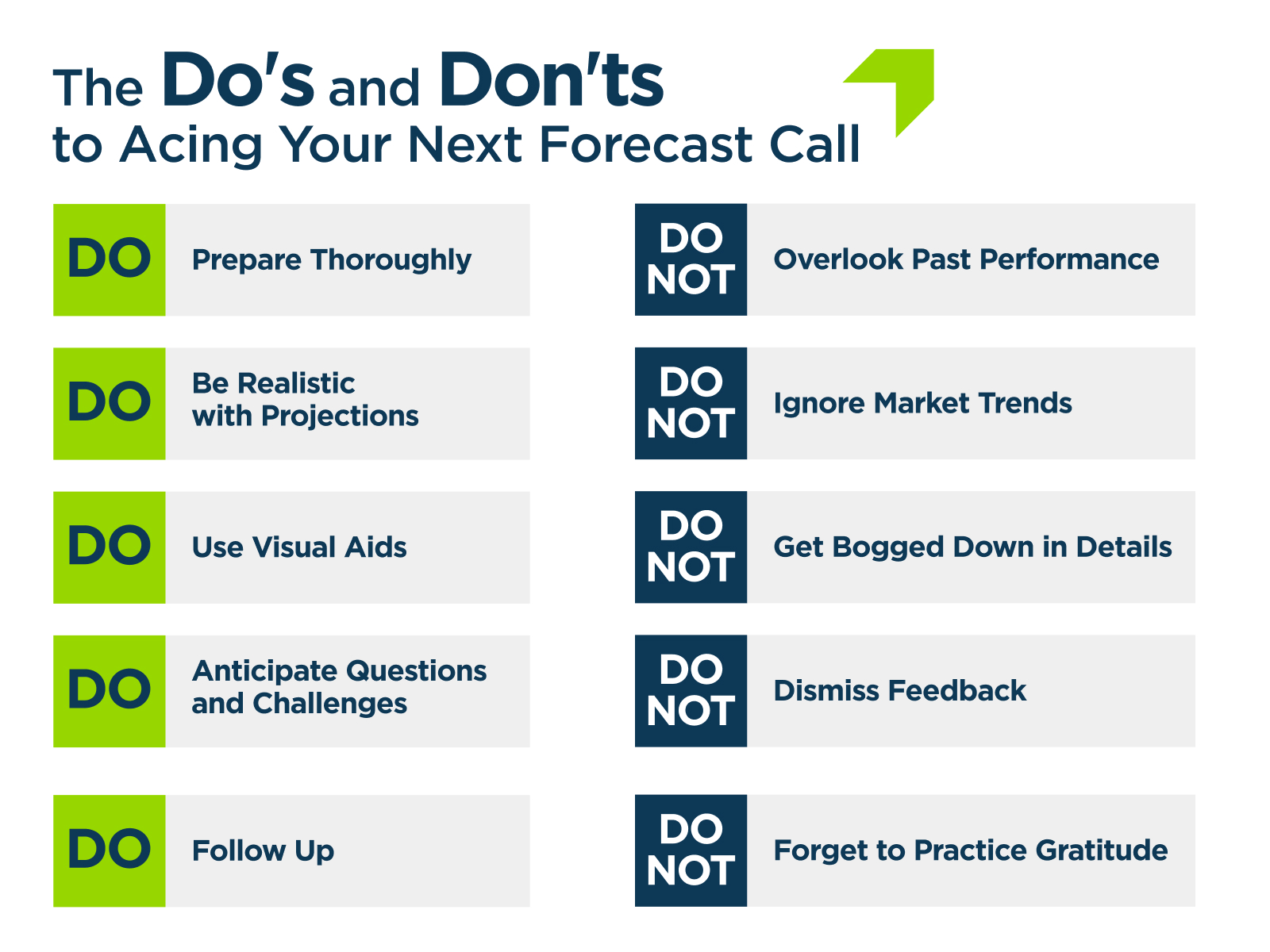Ever felt like forecast calls are a tightrope walk between too much optimism and the harsh reality of numbers? You’re not alone! These calls can be the make-or-break moments for businesses, shaping decisions and strategies for the foreseeable future. We’ve compiled a list of essential do’s and don’ts to help you ace your next forecast call, all while keeping your cool and your credibility intact. Let’s dive into the art of mastering forecast calls.
DO: Prepare Thoroughly
Why Preparation is Your Best Friend: Before you even think about dialing in, make sure you’ve done your homework. This means having all your data, trends, and potential questions at your fingertips. A well-prepared presentation not only boosts your confidence but also shows respect for your audience’s time.
DON’T: Overlook Past Performance
The Past Holds the Clues: Ignoring historical data is like setting sail without a map. Review previous forecasts and outcomes to identify trends and learn from past mistakes or successes. This historical insight will add depth to your predictions and demonstrate a thoughtful approach.
DO: Be Realistic with Projections
Balancing Optimism with Realism: It’s tempting to paint a rosy picture, but unrealistic projections can lead to distrust and disappointment. Be optimistic, yet grounded. Your credibility depends on the accuracy of your forecasts, so keep them achievable.
DON’T: Ignore Market Trends
Staying Ahead of the Curve: The market is your playground, and staying oblivious to its swings and roundabouts can be perilous. Incorporate current market trends and industry news into your forecast to provide a well-rounded perspective.
DO: Use Visual Aids
A Picture is Worth a Thousand Words: Spice up your call with charts, graphs, and visuals. These tools can make complex data more digestible and keep your audience engaged. Just ensure they’re clear, concise, and relevant.
DON’T: Get Bogged Down in Details
Keep It Snappy: While details are important, diving too deep can lose your audience’s interest. Strike a balance between being informative and concise. Remember, the goal is to keep everyone on the same page, not to overwhelm them.
DO: Anticipate Questions and Challenges
Stay One Step Ahead: Think like your audience and prepare for potential questions or objections. Having well-thought-out responses shows that you’re not just prepared, but also proactive in addressing concerns.
DON’T: Dismiss Feedback
Embrace Constructive Criticism: Feedback, whether positive or negative, is golden. Use it as a tool to refine your approach and build stronger relationships with your stakeholders. Show that you value their input by actively listening and responding.
DO: Follow Up
Seal the Deal with a Follow-Up: The end of your call isn’t the end of the road. Send a follow-up email summarizing key points and next steps. This not only reinforces the call’s content but also keeps the lines of communication open.
DON’T: Forget to Practice Gratitude
A Little Thanks Goes a Long Way: Ending your call on a positive note by thanking participants for their time and contributions can leave a lasting impression. It’s a simple yet powerful way to show appreciation and foster a positive atmosphere.
Conclusion
Forecast calls might seem daunting, but with these do’s and don’ts in your arsenal, you’re all set to tackle them with confidence and savvy. Remember, the goal is not just to present numbers but to tell a compelling story about where your business is headed. So, go ahead, embrace these tips, and watch your forecast calls transform from mundane to memorable. Here’s to forecasting your way to success!



